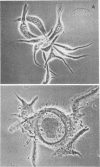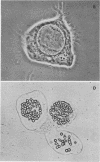Abstract
Cloned cell lines from the established Trichoplusia ni line TN-368 appear to differ from one another in their relative capabilities to serve as plaque assay indicator cell lines for Autographa californica nuclear polyhedrosis virus. Although there seems to be little correlation between their relative generation times and their efficiency in supporting plaque formation as indicator cell lines, there does seem to be a relationship within a given line between its capability to serve as an indicator and its phase of growth as a population; i.e., lag, logarithmic, or stationary. Both the parent line and clone 10 were more efficient indicators when they were in the logarithmic phase of growth than when in either the lag or stationary phases. Also, there appears to be a rough correlation between the capability of a given clone to serve as an indicator and the rate at which polyhedra first appear in the nuclei of the infected cells, with the best indicators producing polyhedra first. Increased incubation time has no effect on equalizing the plaque assay results for the less efficient clones. It was observed, also, that those clones that are the least efficient as plaque assay indicators produce the most external PFU per cell.
Full text
PDF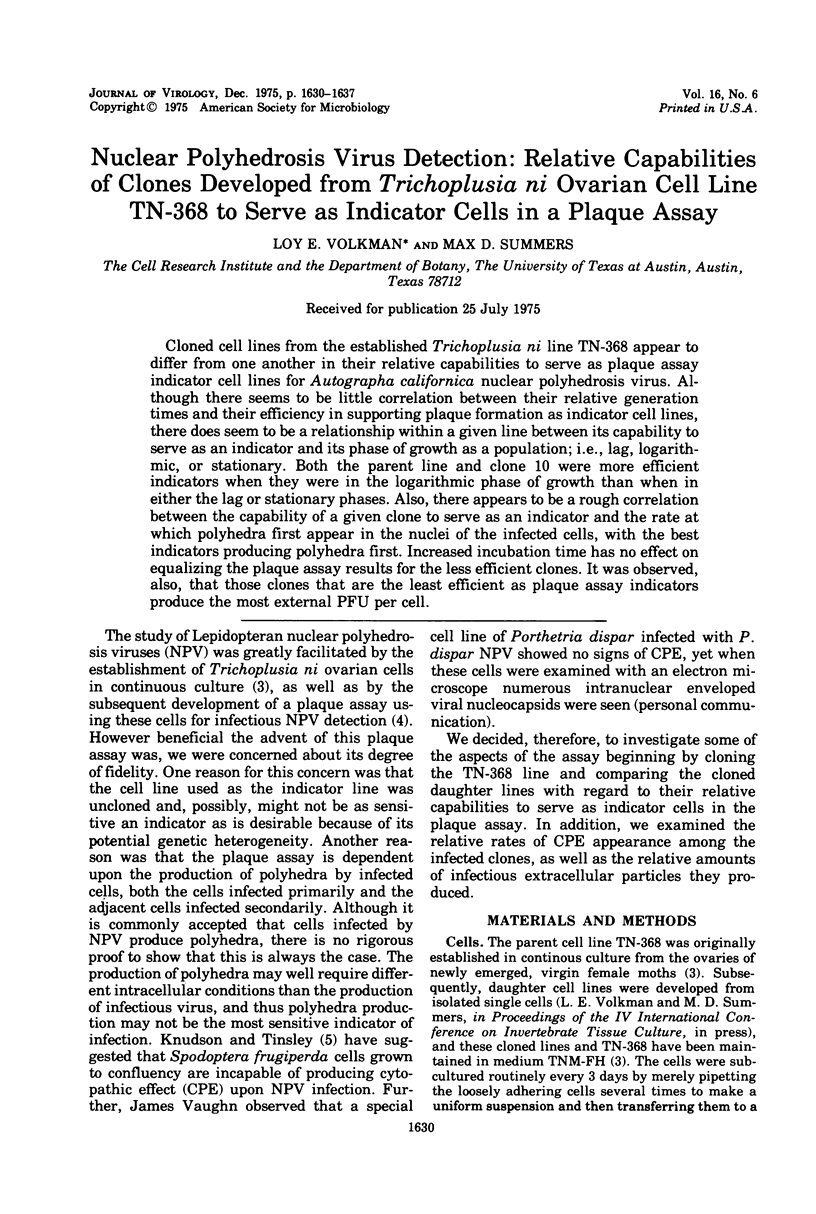
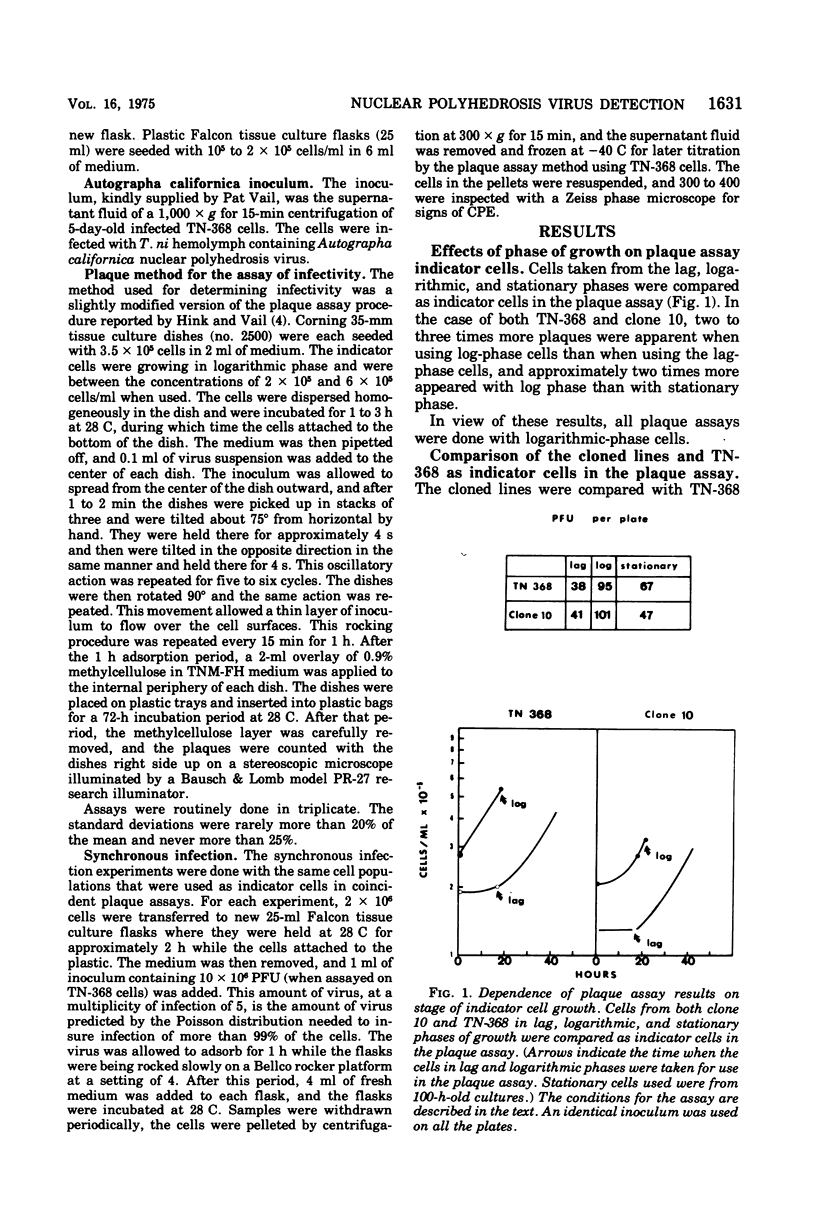
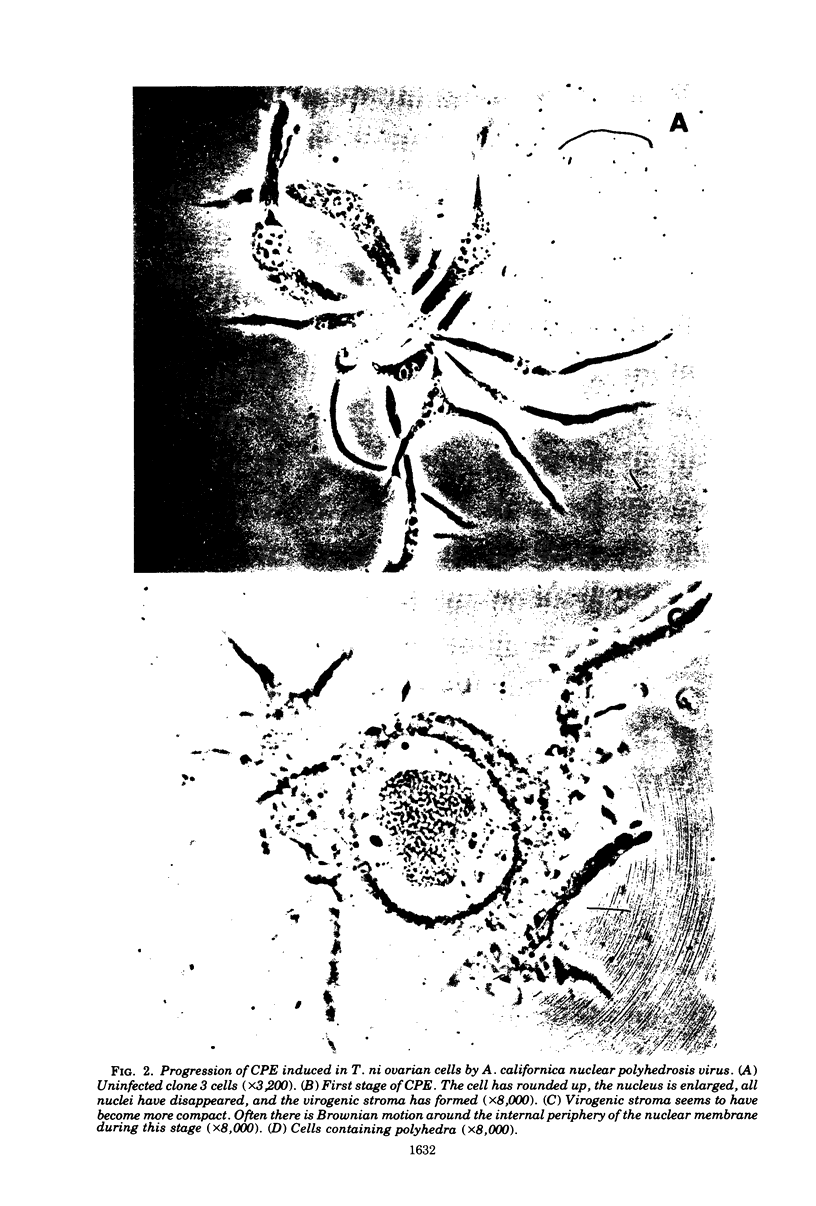
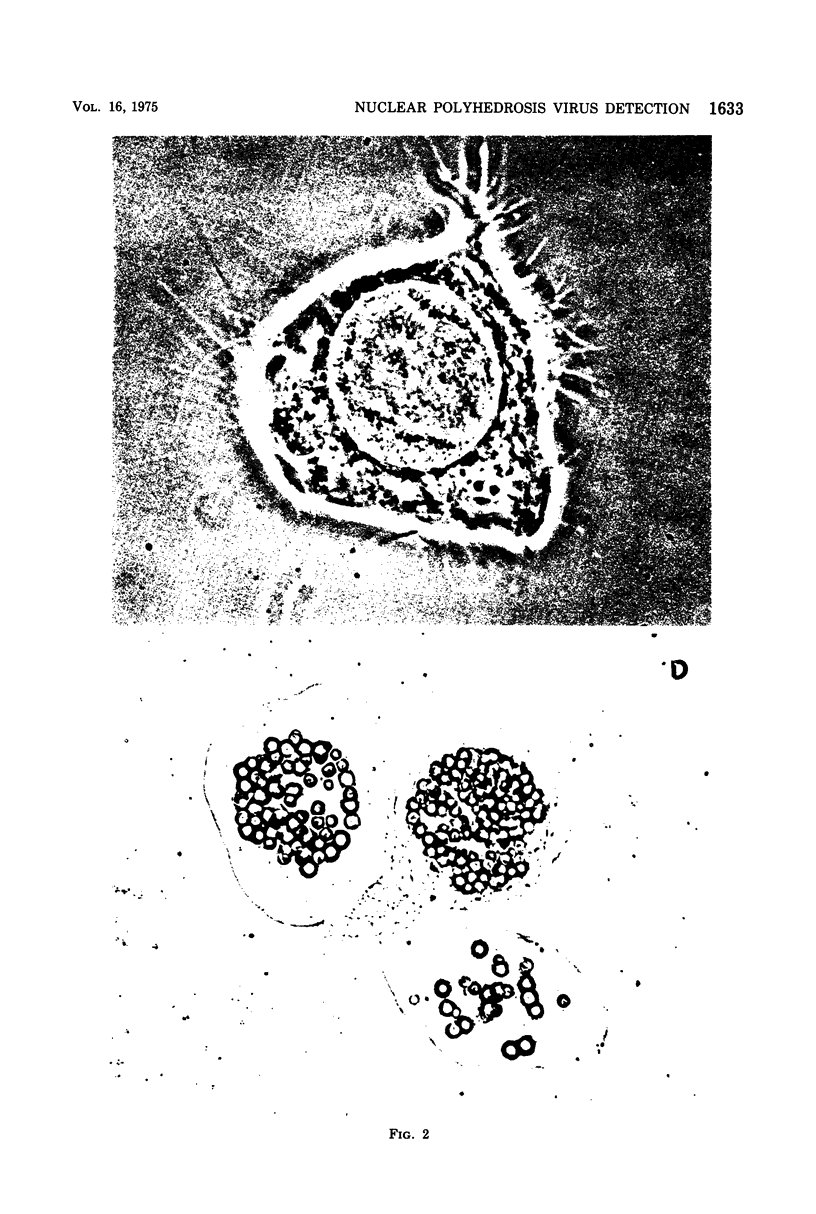
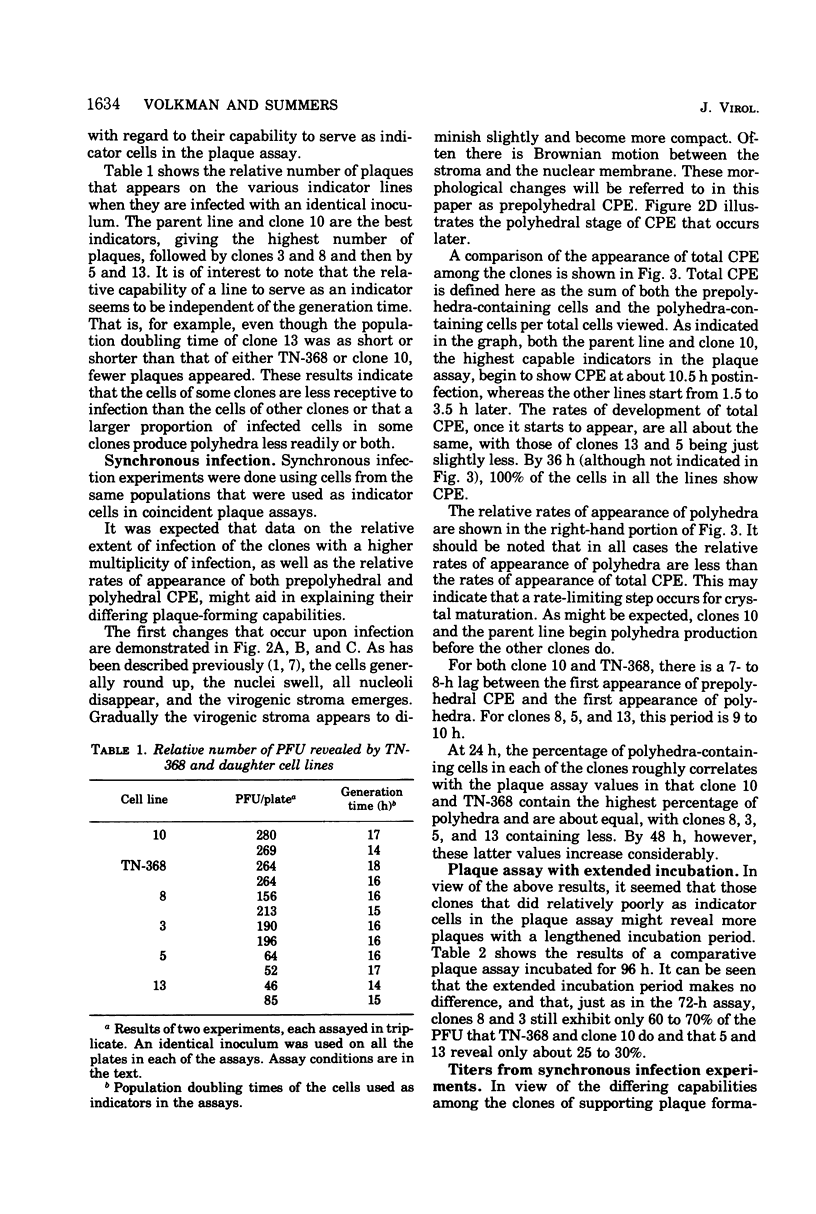
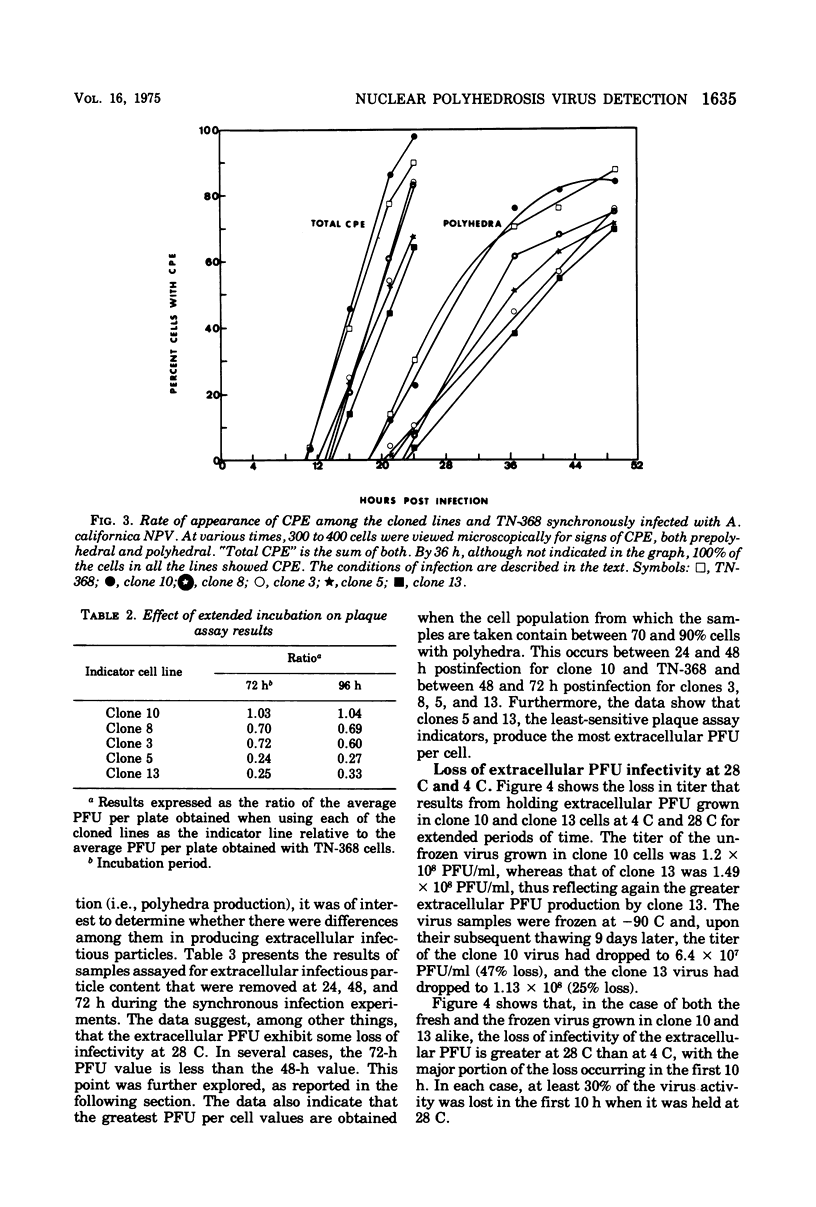
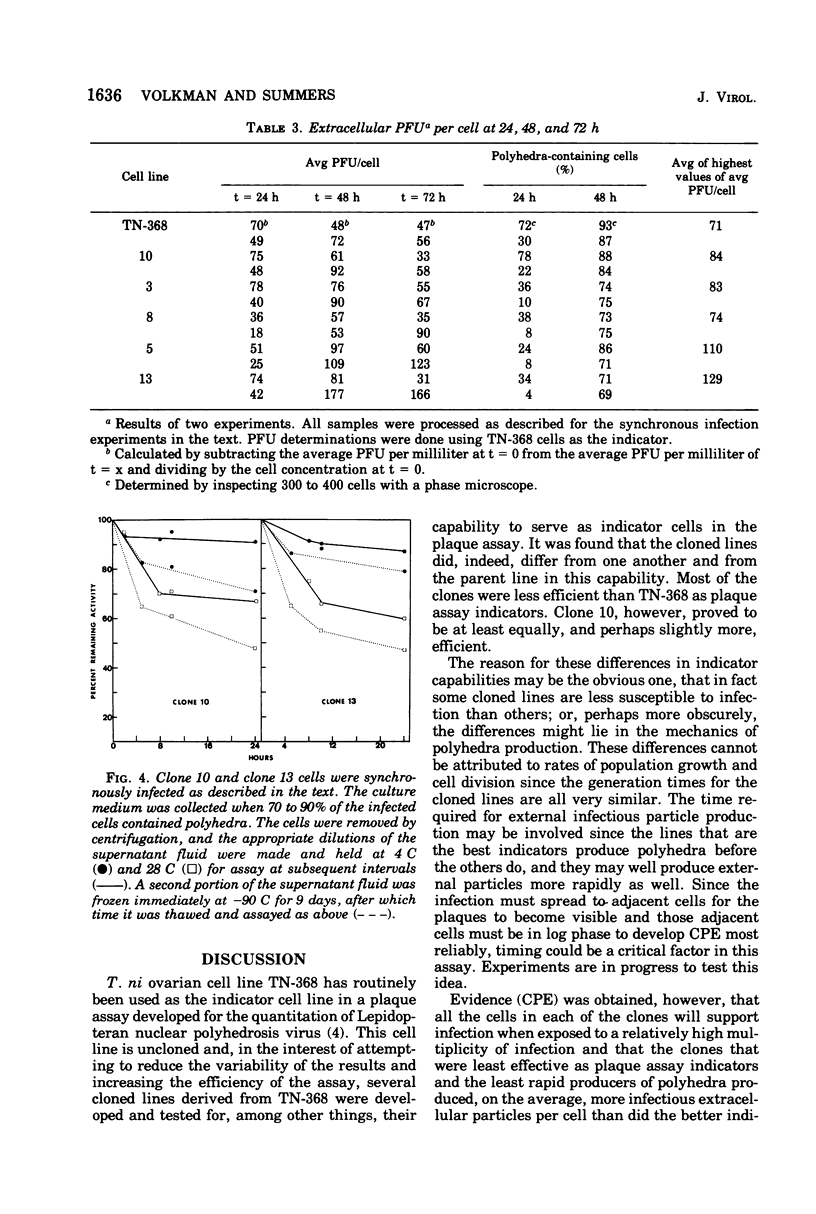
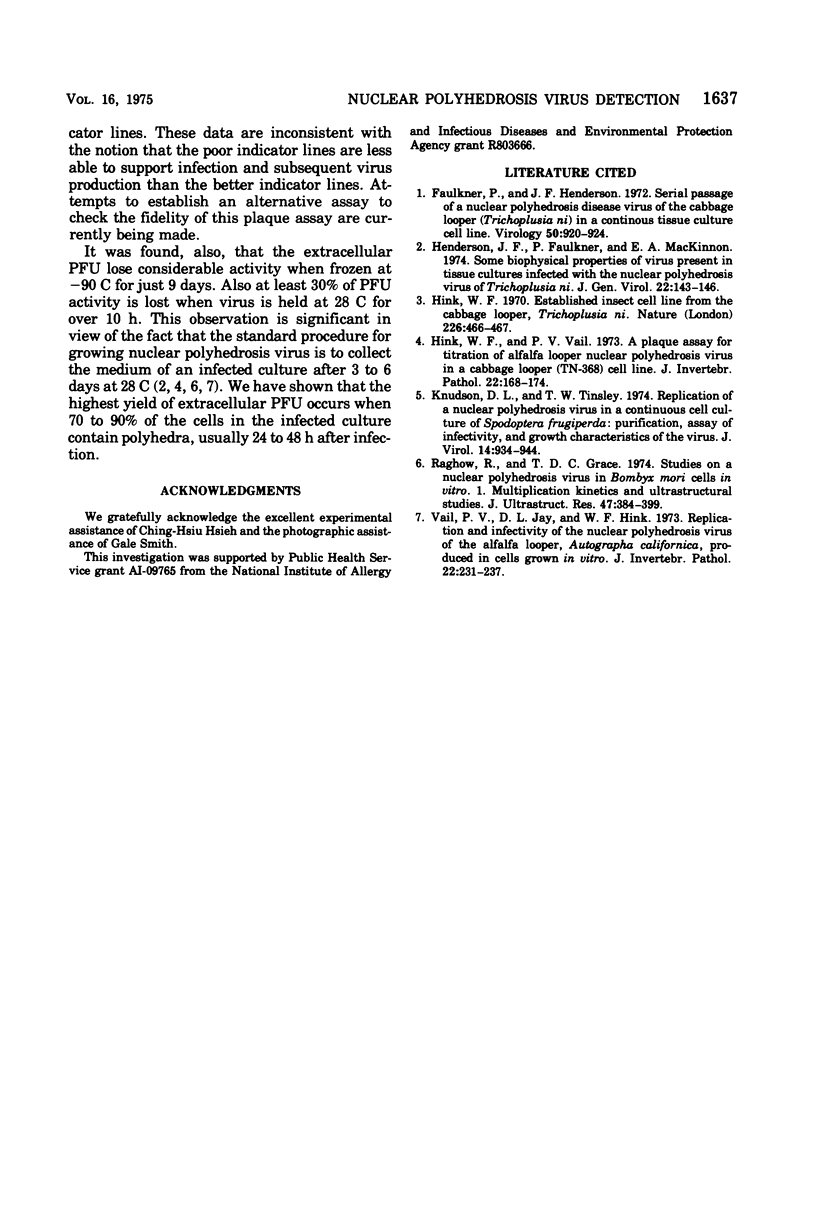
Images in this article
Selected References
These references are in PubMed. This may not be the complete list of references from this article.
- Faulkner P., Henderson J. F. Serial passage of a nuclear polyhedrosis disease virus of the cabbage looper (Trichoplusia ni) in a continuous tissue culture cell line. Virology. 1972 Dec;50(3):920–924. doi: 10.1016/0042-6822(72)90448-5. [DOI] [PubMed] [Google Scholar]
- Henderson J. F., Faulkner P., MacKinnon E. A. Some biophysical properties of virus present in tissue cultures infected with the nuclear polyhedrosis virus of Trichoplusia ni. J Gen Virol. 1974 Jan;22(1):143–146. doi: 10.1099/0022-1317-22-1-143. [DOI] [PubMed] [Google Scholar]
- Hink W. F. Established insect cell line from the cabbage looper, Trichoplusia ni. Nature. 1970 May 2;226(5244):466–467. doi: 10.1038/226466b0. [DOI] [PubMed] [Google Scholar]
- Knudson D. L., Tinsley T. W. Replication of a nuclear polyhedrosis virus in a continuous cell culture of Spodoptera frugiperda: purification, assay of infectivity, and growth characteristics of the virus. J Virol. 1974 Oct;14(4):934–944. doi: 10.1128/jvi.14.4.934-944.1974. [DOI] [PMC free article] [PubMed] [Google Scholar]
- Raghow R., Grace T. D. Studies on a nuclear polyhedrosis virus in Bombyx mori cells in vitro. 1. Multiplication kinetics and ultrastructural studies. J Ultrastruct Res. 1974 Jun;47(3):384–399. doi: 10.1016/s0022-5320(74)90016-1. [DOI] [PubMed] [Google Scholar]



